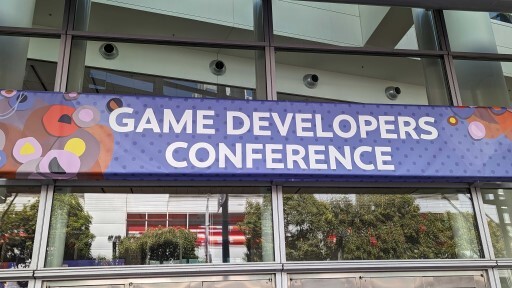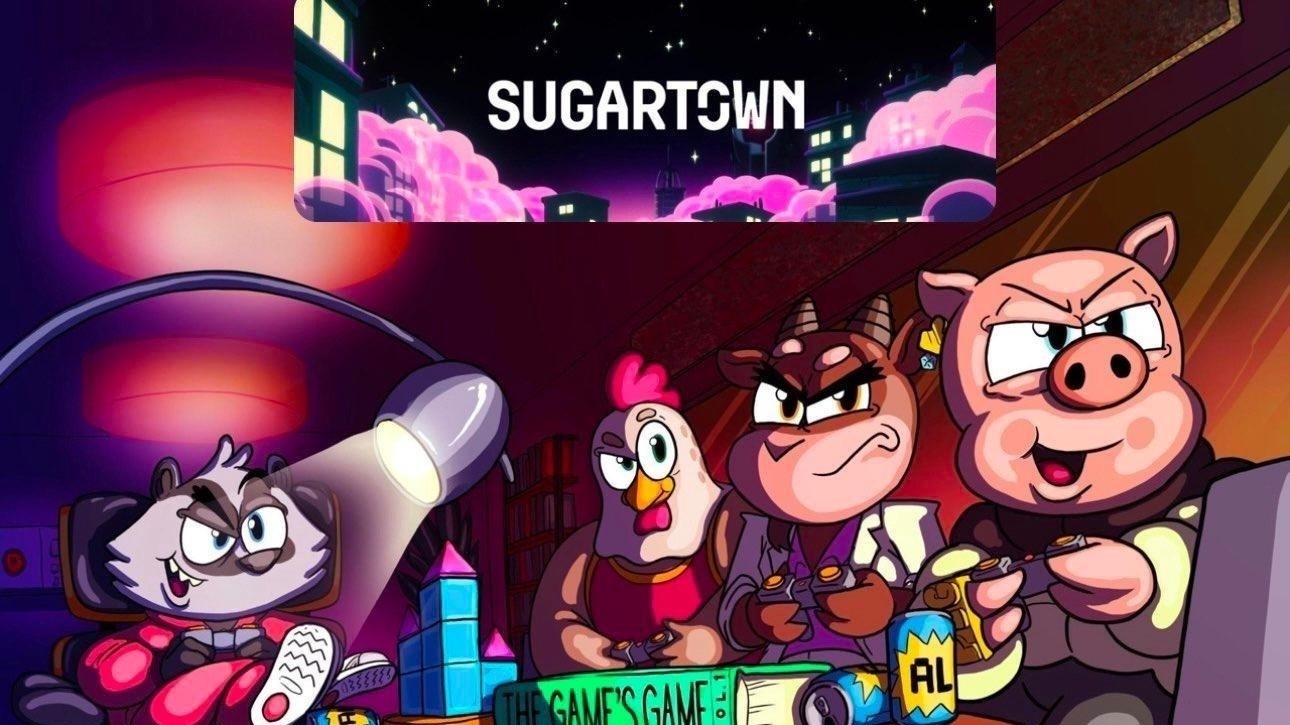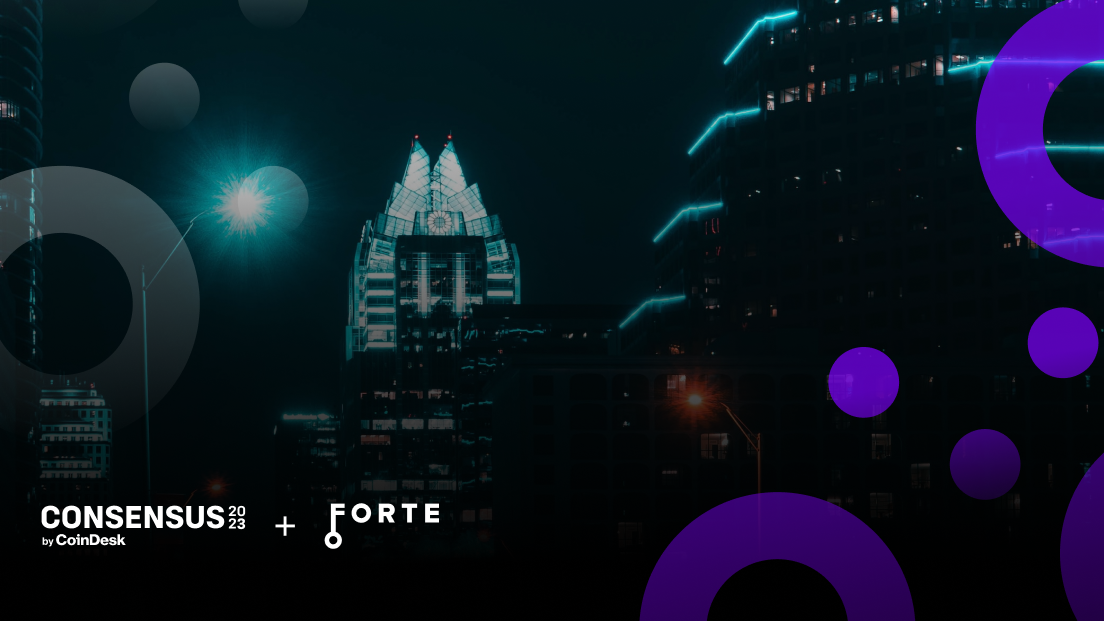The Game Developers Conference 2023 got off to a roaring start this week, once again, with thousands of industry professionals from all over the world flocking to the Moscone Center in San Francisco.
We spent the day checking out panels hosted by a number of teams building in the Web3 gaming space. We’re hopeful that many of the insights we’re hearing so far are aligned with Forte’s theses from day one: focus first on building great games that give players true property rights, rather than making pure entertainment or speculative expenditures.
Enabling players to freely trade goods and services with each other, and participate in community economies that reward creativity, collaboration, and skill will provide the entire ecosystem—player communities and game developers—with new creative and economic opportunities that were previously technologically impossible. Let’s run through some of the highlights and key themes that came up at the event.
Web3 on show
The third floor of the Moscone West building was packed with Web3 teams and sponsorships and hosted a full day of Web3 forum panels. While it’s been a rocky year for blockchain projects, many are still bullish on Web3 games.
Despite everything that has unfolded in the market, like NFT pricing volatility and high-profile banking collapses—or maybe because of it — we’re seeing a much-needed shift away from fast launches of NFT games where the utility of these assets were somewhat unclear (some may even say those “games” weren’t games at all but more of get-rich-quick money-grabs) and instead toward a strong and deliberate refocus on what it means to build real communities and organic experiences in Web3.
Fun over finance
One of the overarching themes among Web3 panelists was a focus on “fun first.” It’s clear that lessons have been learned from the early play-to-earn (P2E) model and its overemphasis on monetization over gameplay. Even teams that launched games and products previously focused on P2E discussed how they’re adapting to be more player-centric in their design philosophy.
Forte has always taken the view that games need to be enjoyable and engaging above all, with Web3 features providing an added layer of benefits to players and developers. It’s great to see the industry as a whole aligning behind the same principle we’ve believed in for years.
“First and foremost, we focus on gameplay and the fun of the player experience,” Josh Williams, co-founder and CEO of Forte, explained in a podcast interview with Naavik. Blockchain technology, Williams has said, albeit revolutionary in its own right, is a means to an end in pushing the games industry to evolve to rewarding developers, players, and publishers who contribute to the network’s health, so a new era of community-focused game economies can emerge.
“Ultimately, Forte is an end-to-end platform that makes it easy for game developers to leverage the underlying technology, keep pace with all the changes in the blockchain landscape, and future-proof themselves while focusing on what they’re good at: making games and managing their players,” Williams added.
Sustainable economics
We also heard much discussion around economic stability and sustainability. Tokenomics and economy design were referenced in every panel, with careful balancing of sinks and utility as a consistent theme. Many of the panelists referenced their own early failures in economy design, highlighting lessons learned and discussing the ways their thinking has evolved.
Most evident was the realization that Web3 game economies require much more intentional design than Web2 economies, and the development of sustainable economies, which effectively balances global supplies and demands, starts early. Simplistic models with limited controls heavily favored early adopters and produced runaway inflation as communities grew and early adopters sold off their earnings to realize value. Developers spoke about the need for a focus on carefully balancing taps and sinks, and building incentives to use or spend assets directly into the core gameplay loop, which is a stark contrast to building economies for Web2 games, and requires different expertise.
Aligning players and developers
Every panel took time to introduce Web3 as a concept and to highlight the opportunities that excite them most. Unsurprisingly, digital property rights and true player ownership were a consistent theme. But it was encouraging to hear a number of veteran Web2 game industry professionals discuss their excitement about Web3’s potential to bring game developers and players into alignment with each other.
“In Web2, the community was often really toxic,” Patrick Bergman, of Gala Games, said. “In Web3, it’s so refreshing to see an engaged community that feels like they are on the same side as us.”
In Web2, there is something of an adversarial relationship between developers and players, with both seeking to extract maximum value from one another. Developers must churn content to keep players engaged and spending. By contrast, in Web3, developer teams become partners with their communities, collaborating with them to generate value and create content. That partnership is reflected in how the community interacts with the developers.
At Forte, we call this community economics, and it benefits the entire ecosystem:
Progressive decentralization
Several panels discussed both the potential and the challenges of community governance in games. The consensus was that decentralized ownership and community governance in games is desirable but difficult to achieve in more complex titles. In a game world with digital property rights, players have a real and transparent stake in the item economy. Rather than just purchasing goods, they can earn and resell them, generating revenue that allows them to purchase more and better goods. Some players may get ahead by spending money; others, by spending time. The value of goods is driven by supply and demand, making those goods seem more fairly priced. Meanwhile, the eddies of supply and demand give developers clear data on what kinds of items players want, allowing them to align the production of their goods with the tastes of their consumers. Developers can also build new business models and grow their brand footprints by providing property rights and community governance to their players.
However, all of this requires a system that removes trust from the equation—something that most game developers, especially those unfamiliar with blockchain technology, may struggle with. Platforms like Forte help to address these challenges, implementing solutions that create immutable, transparent, and redundant records of every transaction, thus obviating the need for trust.
Progressive decentralization is being explored by several teams. Moving away from an all-or-nothing approach, progressive decentralization allows developers to cede some control over the economics and governance of a game and its community, and to institute a phased rollout of stronger community controls as the game grows. The main benefit of this approach is that blockchain governance allows players to have a share of voice in the direction of games or in-game institutions. When players are allowed to vote and influence decisions in-game, engagement tends to improve and the community gains confidence in the system, encouraging the growth of the game and its economy.
Stay tuned for more
Day one at GDC 2023 was packed with encouraging reminders that Web3 gaming continues to make strides into the mainstream. The overall climate is one of reflection on lessons learned and a sense of optimism around the next wave of gameplay-focused projects coming in 2023.
The main takeaway from everything we’ve heard? The industry is prioritizing positive, enriching gameplay experiences over speculation. Developers are integrating token economies only when they complement the actual game mechanics, and not just as an earning model.
More updates coming in part two!!



